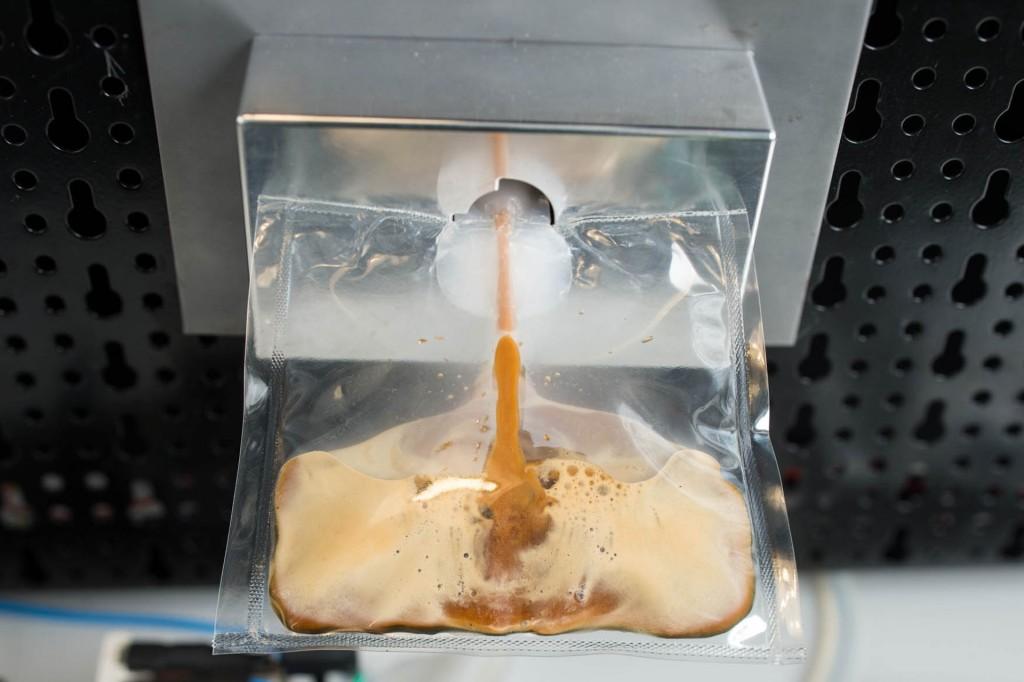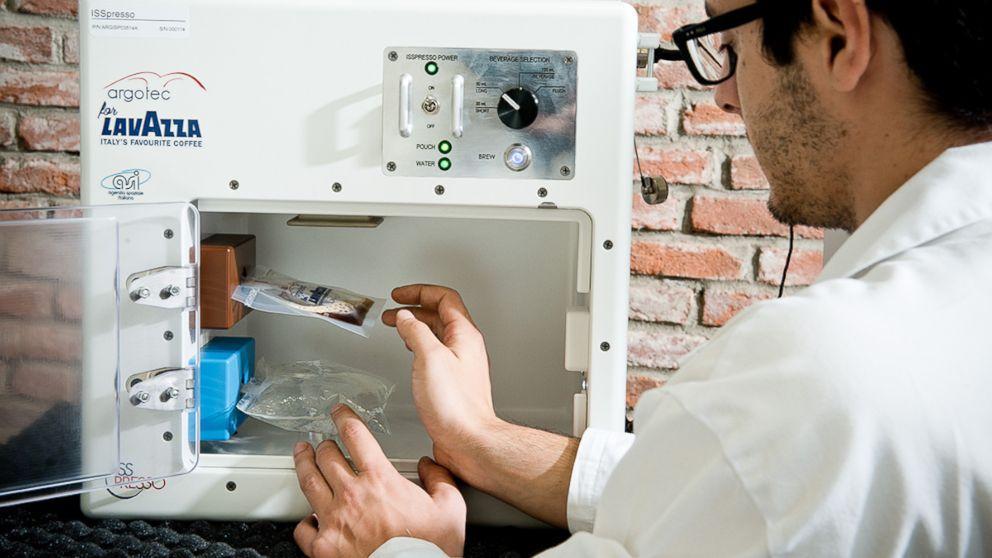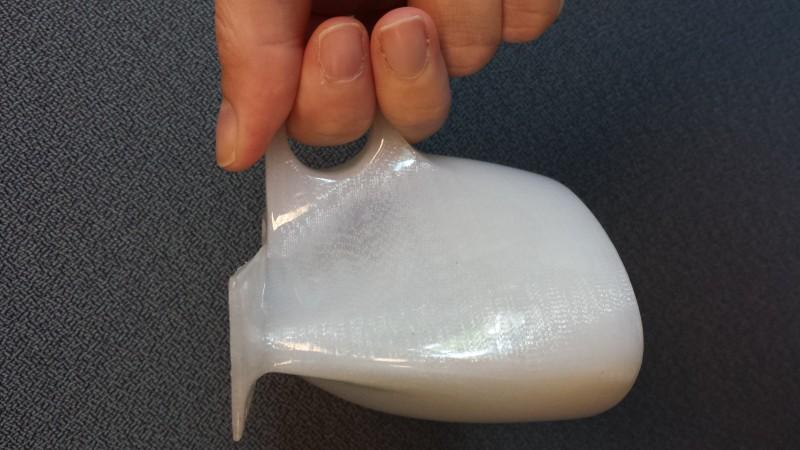3D Printed Coffee Mug Will Allow Astronauts to Enjoy a Cup of Joe – May lead to further advancement of fluid systems in space
One of my favorite memories from my honeymoon a couple years ago was walking the streets of Rome, stopping into coffee shop after coffee shop, grabbing a different type of espresso, or caffè latte at each destination. Italy is known for its coffee, or should I say caffè, and there is a lot of thought, energy and experimentation that goes into creating what some believe is the world’s best ‘Cup of Joe’. It is no surprise, then, that Italians are the ones to invent a machine that is able to brew and serve coffee in microgravity conditions like those experienced on the International Space Station (ISS).
Built by an Italian coffee product manufacturer who has been around since the late 1800s, in partnership with Argotec and the Italian Space Agency, the machine is called the ISSpresso, and it is capable of brewing a perfect cup of espresso in the comforts of zero gravity conditions. There’s nothing like floating out of bed in the morning, grabbing your hot bag of coffee and slurping it down through a plastic straw.
 In all seriousness though, the idea is a great one. Giuseppe Lavazza says that the absence of coffee from space is one of the most common complaints among astronauts. While it may not be quite as nice as drinking it from a foam insulated Starbucks coffee cup, or even the standard in-home mug, the caffeinated beverage certain gets the job done when it comes to providing astronauts with their daily dose of “get out of bed”.
In all seriousness though, the idea is a great one. Giuseppe Lavazza says that the absence of coffee from space is one of the most common complaints among astronauts. While it may not be quite as nice as drinking it from a foam insulated Starbucks coffee cup, or even the standard in-home mug, the caffeinated beverage certain gets the job done when it comes to providing astronauts with their daily dose of “get out of bed”.
While the idea is great, wouldn’t it be even better if these astronauts could actually drink their coffee from a cup, rather than a pouch which is hooked up to a rapid coupling system?
Well, thanks to Mark Weislogel, a professor in the Thermal and Fluid Sciences Group at Portland State University, a colleague named Drew Wollman, and a high school student, Nathan Ott, there may just be a solution on the horizon.
“Espresso is enjoyed by tens of millions of people daily,” the research team wrote. “Coffee is distinguished by a complex low density colloid of emulsified oils. Due to gravity, these oils rise to the surface forming a foam lid called the crema.”
Using a cup, which is entirely 3D printable, researchers intentionally created a design that has quite an odd shape. This shape is so that the flow of coffee can be controlled using surface tension of the liquid, rather than gravity.
“The shape of the container can passively migrate fluid to desired locations without moving parts—using passive forces of wetting and surface tension,” explained the team. “Its geometry is the ‘smart’ part, which operate the fluids-control system without requiring pumps or centrifugal forces.”
Because this cup can be 3D printed, this means that the astronauts on the ISS will have the ability to use the on-board Made in Space 3D printer to create their very own cups, using a design file that can be sent to them from Earth. It has not yet been confirmed if they plan on doing so during this mission, but our guess is that we will see the astronauts drinking coffee out of these oddly shaped cups very soon. This certainly beats drinking out of crinkled up pouches with a straw.
More details on this cup’s design were presented earlier this week at the 67th Annual Meeting of the APS Division of Fluid Dynamics.
For those of you questioning why a highly educated research team would be focusing their attention on figuring out how one can drink coffee in Space, this research actually goes a lot deeper. The team is looking to use these same techniques in order to reinvent some of the other fluid systems on spacecraft and on the ISS. These include fuel tanks, life support equipment, plant/animal living areas, cooling systems and more. With the addition of the 3D printer aboard the ISS, and with more 3D printers coming soon, surely there will be a lot of testing and experimentation going on, not only to find methods to more easily drink coffee, but also to solve problems that previously could not be tested.
What do you think about this new means of drinking coffee in space? Will this technology, coupled with 3D printing, allow for many more advances in the coming months, years, and decades ahead? Discuss in the ‘3D printed space coffee cup’ forum thread on 3DPB.com.
Subscribe to Our Email Newsletter
Stay up-to-date on all the latest news from the 3D printing industry and receive information and offers from third party vendors.
You May Also Like
NSF Awards Kentucky $1M for Advanced Manufacturing
The National Science Foundation has awarded a $1 million grant to the University of Louisville for the Advancing Manufacturing and Building Construction Technologies (NSF AMT) project. This initiative is part...
3D Printing News Briefs, May 11, 2024: 3D Printed Stent, Tower, Sculptures, & More
We’re starting off with medical research in today’s 3D Printing News Briefs, as researchers in Korea used CT images and 3D printing to fabricate an educational simulator for a mastoidectomy....
3D Printing Unpeeled: Wind Turbines, Probiotics and Lenses
TPI Composites, ORNL and Ingersoll Rand are working to make wind turbine tooling segments that can be 18.3 meters long. These elements also include resistive wires that help keep the...
Tethon 3D Releases Cost-effective Bioprinter
Tethon 3D, known for its ceramic-loaded DLP materials, custom resins, and DLP 3D printers, has recently released a bioprinter. Vat polymerization printers like DLP systems have been widely used by...



































